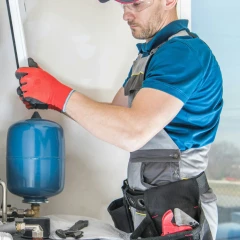













After months of storage, it’s time to get your boat ready for the water. Dewinterizing is a critical step to ensure your vessel runs smoothly and safely for the season ahead.
Maintenance best practices and insurance requirements vary by state, marina, and insurer. Always verify details with your local authorities and licensed providers.
Boats stored for the winter often undergo months without use, during which fluids can settle, seals can dry out, and systems can develop issues. Dewinterizing helps you spot problems early, avoid breakdowns, and ensure compliance with insurance terms.
Hull coverage may need to be adjusted or reactivated if it was reduced during storage, depending on your policy and insurer’s requirements.
Inspect the Hull and Propeller
Check for cracks, blisters, or damage. Inspect the propeller for dents or bends that could affect performance.
Change the Engine Oil and Filters
Old oil can contain moisture and contaminants. Fresh oil and filters help keep the engine running smoothly.
Flush and Refill Cooling Systems
Remove antifreeze, flush with fresh water, and refill with the appropriate coolant if your boat has a closed cooling system.
Test the Battery
Recharge and test the battery, checking cables for corrosion or wear. Replace if needed.
Inspect Fuel System
Look for leaks, cracks, or brittle fuel lines. Ensure the fuel is fresh — old fuel can lead to engine problems.
Check Safety Equipment
Ensure life jackets, flares, fire extinguishers, and first aid kits are onboard and in good condition.
Review Navigation and Electrical Systems
Test lights, gauges, radios, and GPS to confirm they’re working.
Disclaimer: This article provides general information and is not legal, insurance, or mechanical advice. Maintenance and insurance requirements vary by location, marina, and insurer. Always confirm specific guidance with licensed professionals before making decisions.
